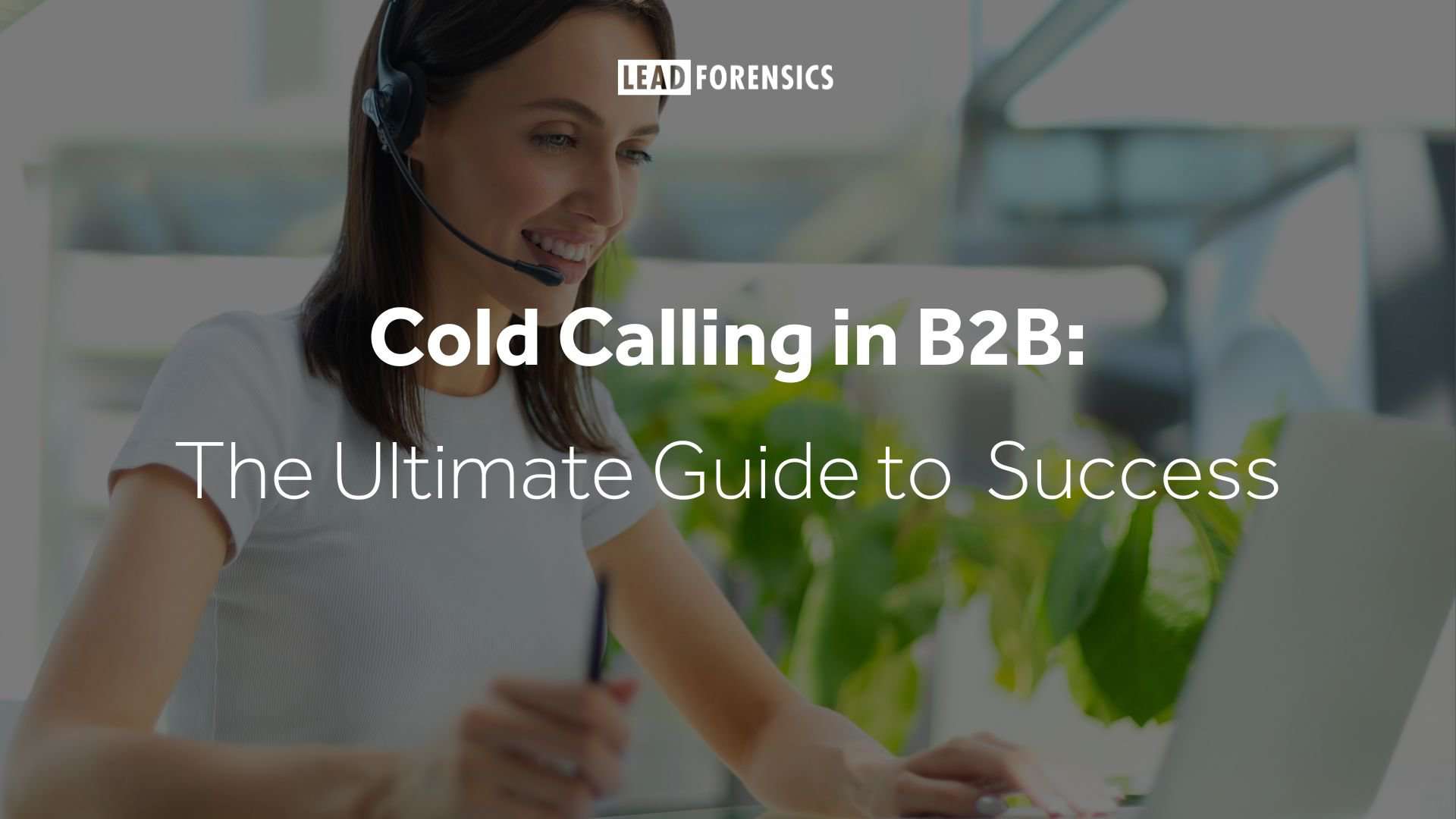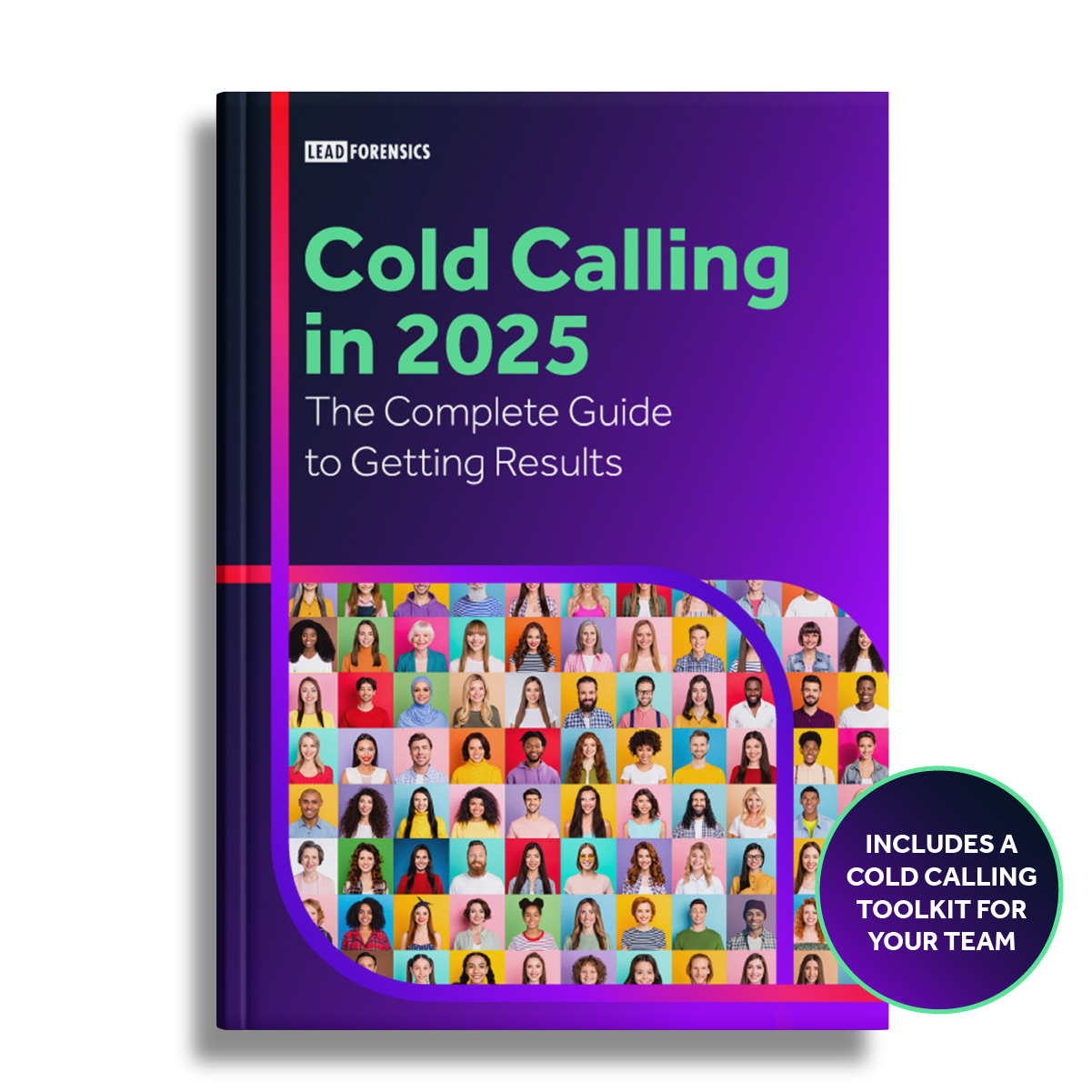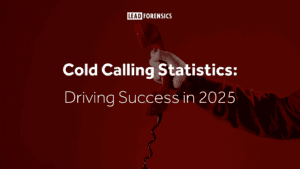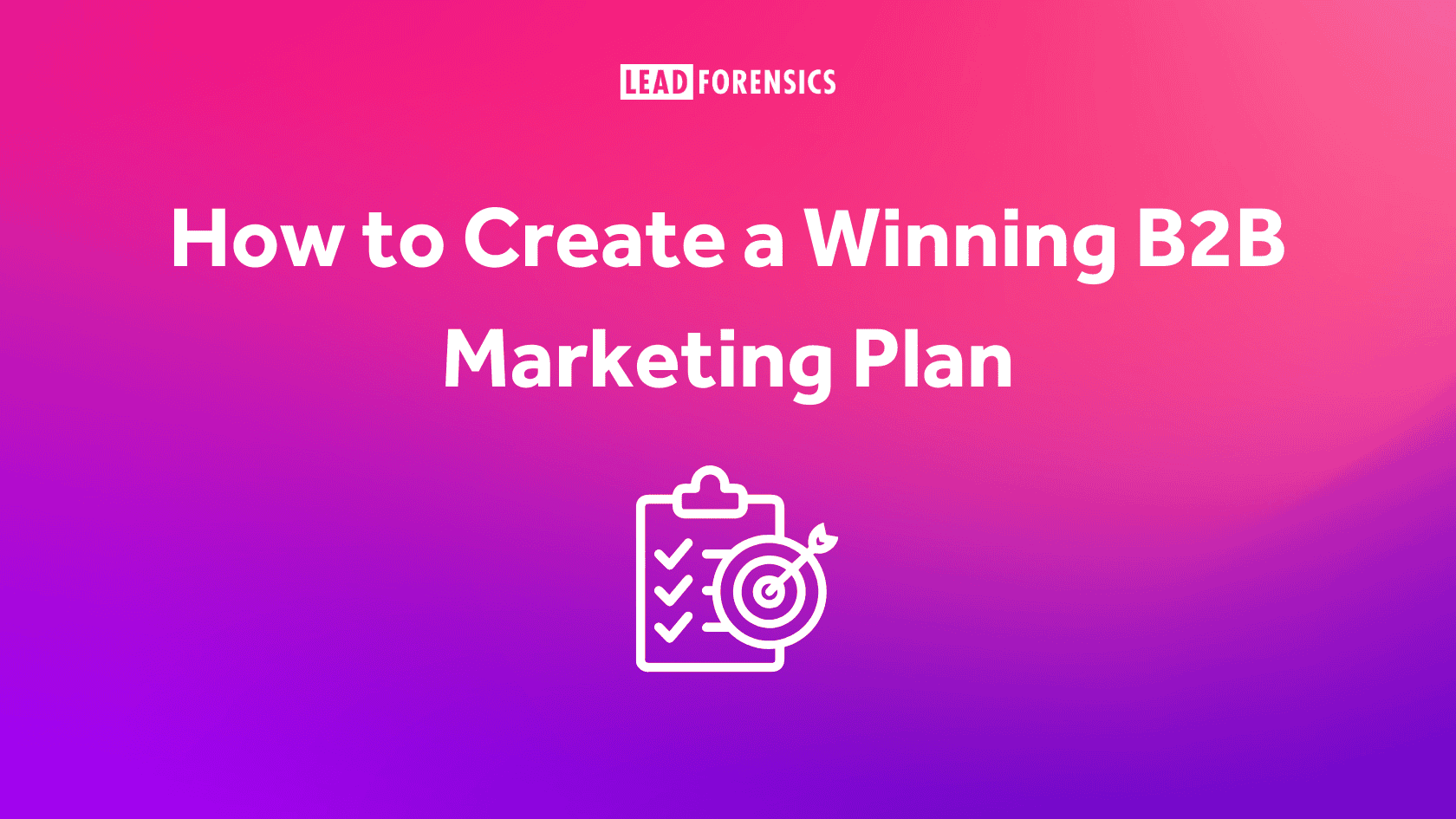Did you know that 57% of C-level buyers prefer to be contacted by phone? That’s right! While email and social media have taken over much of the sales process, cold calling and the human touch can make all the difference.
But let’s be honest – it isn’t easy. It requires skill, persistence, and a strategy to engage decision-makers and turn prospects into customers.
At Lead Forensics, our sales experts know everything there is to know about cold calling – and how to make it work. This guide will walk you through everything you need to know, from best practices to overcoming objections and optimizing your sales process.
What Is Cold Calling in B2B?
Cold calling in B2B refers to the process of reaching out to potential business customers who haven’t previously interacted with a salesperson at your company.
The goal is to introduce your product or service, gauge interest, and ultimately convert prospects into paying clients.
Unlike warm calling (where the lead has shown some level of interest), cold calling requires a structured approach to grab attention and spark engagement.
Is Cold Calling Still Relevant in B2B?
Despite the rise of digital marketing and automation, cold calling remains an effective B2B sales strategy because of the following:
- Direct Engagement: Unlike emails, phone calls allow real-time conversations, enabling immediate rapport building.
- Higher Response Rates: Calls often outperform emails in terms of engagement and response rates.
- Immediate Qualification: Sales reps can quickly determine whether a lead is worth pursuing.
- Builds Trust: A well-executed call creates a human connection that digital outreach often lacks.
- Cuts Through the Noise: In a world of crowded inboxes, a direct call can break through the clutter.
What Are the Challenges of Cold Calling in B2B?
Cold calling isn’t for the faint of heart. Some of the biggest challenges include:
- Gatekeepers Blocking Access to Decision-Makers: Receptionists and assistants often filter calls, making it hard to reach key contacts.
- High Rejection Rates: Many prospects will decline, hang up, or be uninterested.
- Limited Attention Spans: Busy professionals don’t always have time for unsolicited sales calls.
- Handling Objections in Real-Time: Unlike email, there’s no time to craft the perfect response – reps must think on their feet.
- Compliance and Regulations: Many regions have strict laws on unsolicited calls, making compliance essential.

But fear not – there are proven ways to overcome these obstacles and make cold calling a powerful tool in your sales arsenal.
How to Prepare for a Successful Cold Call
Success in cold calling starts before you even dial the number. Here’s how to set yourself up for success:
- Research Your Prospect: Understand their business, industry, and potential pain points.
- Create a Strong Call Script: While you shouldn’t sound robotic, a well-structured script keeps the conversation on track.
- Use the Right Tools: CRM software, dialers, and data enrichment tools can streamline your workflow.
- Have a Clear Value Proposition: Know exactly why your product or service benefits the prospect.
- Practice Active Listening: Be prepared to adjust your pitch based on the prospect’s responses.
- Choose the Right Timing: Studies show that the best times to cold call are early mornings (8–9 AM) or late afternoons (4–5 PM).
What Are the Best Cold Calling Techniques for B2B?
Want to boost your success rate? Implement these cold calling techniques:
1. The “Problem-Solution” Approach
- Start by identifying a common pain point.
- Offer a solution tailored to the prospect’s business.
- Example: “Many companies in your industry struggle with X. We help businesses solve this problem by Y.”
2. The Elevator Pitch Method
- Keep your introduction concise and compelling.
- Clearly communicate who you are, what you do, and how it benefits the prospect in under 30 seconds.
3. The “Permission-Based” Opener
- Instead of jumping straight into your pitch, ask for permission.
- Example: “Hi [Name], I know you’re busy. Can I have 30 seconds to explain why I’m calling?”
4. The Question-Driven Approach
- Engage prospects with thought-provoking questions.
- Example: “What’s your biggest challenge with X right now?”
5. The Follow-Up Strategy
- If the prospect isn’t ready to commit, set a follow-up call.
- Use personalized follow-ups to stay on their radar.
How to Handle Objections in Cold Calling
Objections are part of the process. Here’s how to handle common ones:
- “I’m not interested.” → Respond with: “I completely understand. Just out of curiosity, is [pain point] something your team is looking to solve in the future?”
- “We don’t have the budget.” → “Many of our customers felt the same way before realizing how much revenue they were losing without [your solution].”
- “Send me an email instead.” → “Absolutely! What specific information would you find most helpful so I can tailor it to your needs?”
- “We’re already working with another provider.” → “That’s great! What do you like most about your current solution, and is there anything you’d change if you could?”
How Can B2B Companies Use Technology for Cold Calling?
Cold calling is no longer just about dialing numbers. Technology can supercharge your efforts:
- Auto-Dialers: Speed up the process by automating call dialing.
- Call Recording & AI Analysis: Improve sales techniques by analyzing call performance.
- CRM Systems: Keep track of leads, calls, and follow-ups.
- Lead Scoring Software: Prioritize high-value prospects for better conversion rates.
- Website Visitor Identification: Reach out to the companies visiting your website using software such as Lead Forensics.

Cold Calling vs. Warm Calling: What’s the Difference?
- Cold Calling: Reaching out to prospects who haven’t shown prior interest.
- Warm Calling: Engaging leads who have interacted with your business before (e.g., website visitors, webinar attendees, previous inquiries).
- Which Is Better? Warm calling generally yields better results, but cold calling is still valuable when done strategically.
What Metrics Should You Track for Cold Calling Success?
To improve your B2B cold calling efforts, track these key metrics:
- Call-to-Appointment Ratio: How many calls result in scheduled meetings?
- Conversion Rate: What percentage of calls turn into closed deals?
- Average Call Duration: Longer calls typically indicate higher engagement.
- Follow-Up Success Rate: How many prospects convert after a follow-up?
By analyzing these metrics, businesses can refine their approach and boost conversion rates.
Get Your Free Book Download
Get the FREE “Cold Calling in 2025” guide and transform your sales team’s results.
Winning scripts, outreach secrets, and a FREE toolkit included.
Get yours here! 👉 https://hubs.ly/Q0374J070
Final Thoughts: Is Cold Calling Still Worth It in B2B?
Absolutely! While the cold call has evolved, it remains a crucial tool for B2B sales teams. The key is to use a strategic, research-driven approach that focuses on delivering value rather than making a hard sell. When combined with modern sales techniques and technology, cold calling can open doors to valuable business opportunities.











